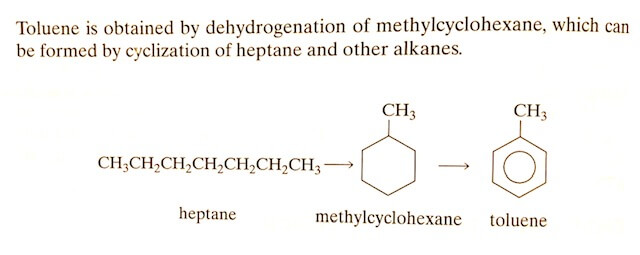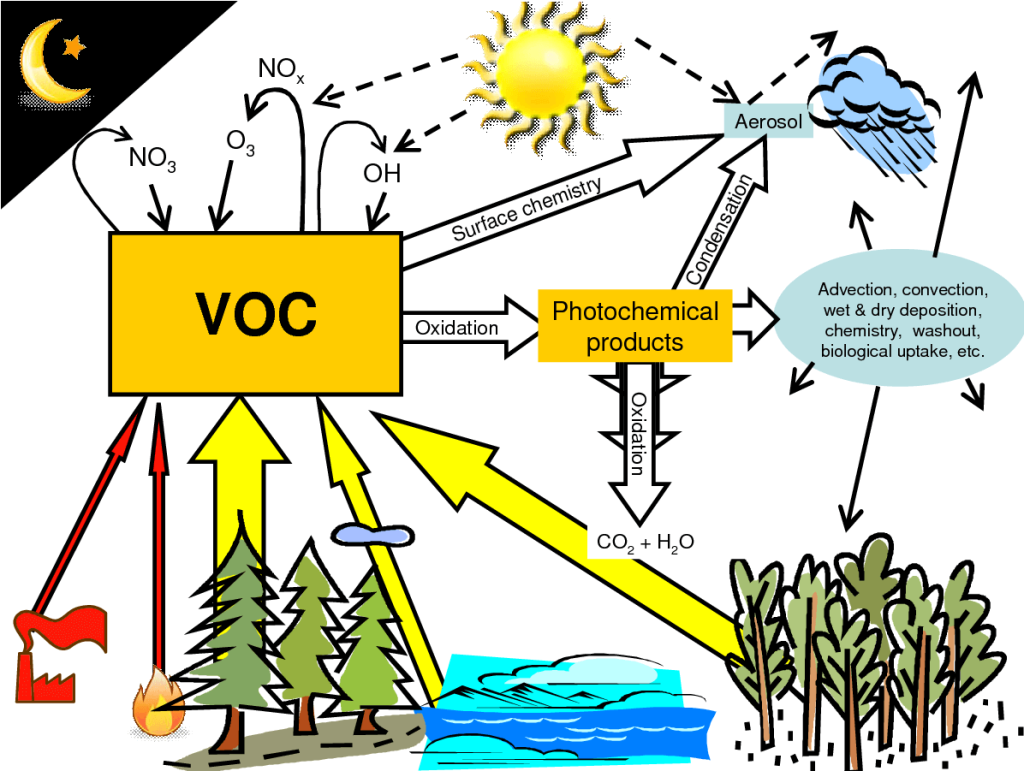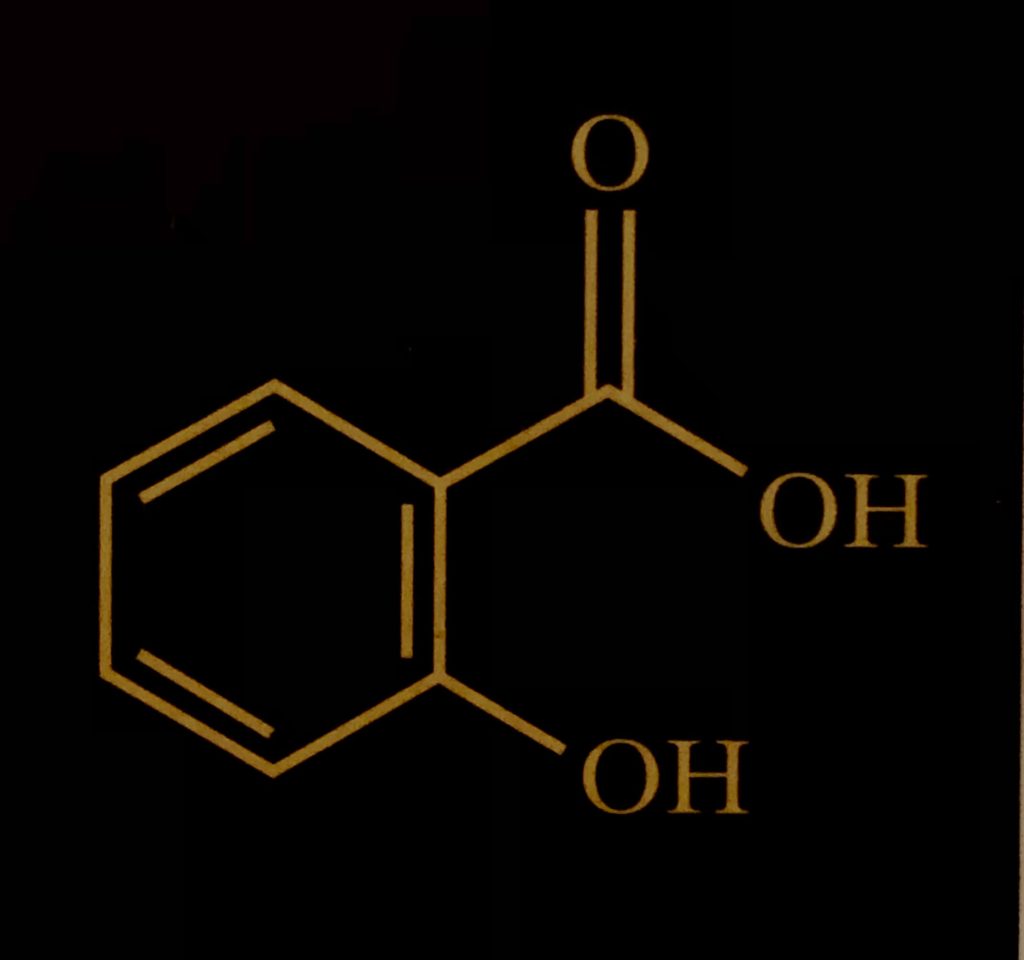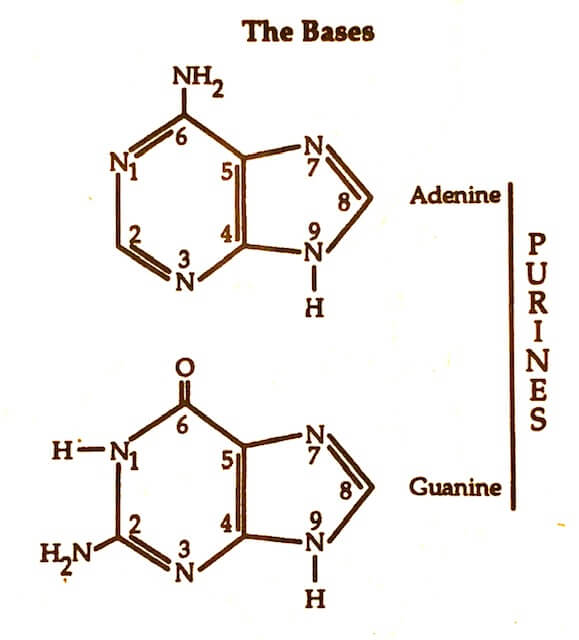Today I want to touch on Low-VOC paint.
If you want to learn a little more about interior paint in general, head over to my previous posts here and here.
What Does “VOC” Mean?
VOC is an acronym for “volatile organic compound.”
Let’s go back to chemistry class and remind ourselves that organic compounds are generally those composed of carbon-carbon covalent bonds with hydrogen and other atoms. Organic compounds can be of natural origin or they can be synthesized. Your own DNA, for example, is composed of organic compounds, as is the gasoline you put in your car.
In chemistry, volatility refers to the tendency for a substance to go from liquid or solid to a gas. All substances exhibit volatility to some extent, depending on ambient thermodynamic properties. At atmospheric pressure, water is less volatile than an organic compound such as isopropyl (rubbing) alcohol. However, high temperatures will increase the volatility of water, thereby creating humidity.

What is “Low-VOC”?
When you see messages about low-VOC paint, you should take this to mean that the organic compounds used to create the paint will have less tendency to release into the air as a gas (so called “off-gassing”) at room temperature.
That does not mean that a paint will have no organic compounds at all (practically impossible at this point in time, as far as I am aware), or that off-gassing will be non-existent. Recall from my “Why You Should Pay More for Paint” blog post that paint is made up of 4 general ingredients, many of which are of organic origin.
Further, whether organic or not, the solvent in paint needs to be volatile in order to evaporate off and leave behind the final paint film.
What does “Zero-VOC” or “No-VOC” Mean?
You should also take special note to understand that while some paint products today are being marketed as No- or Zero VOC, this is a sleight of hand. As mentioned already, all compounds exhibit volatility depending on thermodynamic conditions, regardless of whether the compound is organic or not.
What marketers mean when they call products “Zero VOC” is that the organic compounds used in their paint products have a volatility which falls below some regulatory threshold at room temperature. This does not mean that the ingredients used can’t still be harmful, or that the paint is “eco-friendly.” Further, most paints are sold as bases which may be manufactured to be low-VOC, but the addition of pigment at the paint store to create that perfect color on your paint swatch could still introduce higher VOC concentrations.
Are VOCs Dangerous?
Just because an organic compound is volatile does not necessarily mean it is dangerous to human health. If VOCs concern you, your focus should really be on limiting or eliminating the concentration of hazardous VOCs in the confines of your indoor spaces.
Hazardous VOCs are those which have negative impacts on human health and the environment. Acute health effects can include respiratory problems like asthma, coughing, dizziness, or irritation of the eyes, nose, or throat. Longer-term exposure to hazardous VOCs can lead to liver and kidney damage. Some VOCs are known or suspected carcinogens.
Common household VOCs that are known to be hazardous include propane, butane, methyl chloride, formaldehyde (surprisingly common), vinyl chloride (used in PVCs), acetone, toluene, etc.

Finding out which household products contain hazardous VOCs is not necessarily easy. Manufacturers use VOCs in all kinds of products (such as treated wood in the framing of your home, your furniture, your kitchen cabinets, etc.) and don’t necessarily have to disclose them. Further, just because an organic compound has low volatility, it can still vaporize into the air over longer periods of time. VOCs can even leak into your house from the water coming out of your taps or through the tiniest openings to the outdoors!
Further, all odors (aromatic compounds) are ipso facto volatile, but not all volatile compounds can be detected by the human nose as a “smell”. Therefore, odors are not reliable indicators of the presence of VOCs or nonorganic volatile compounds.
Informed Decisions
So, now you know what a VOC is, and can use this knowledge to select paint products suitable for your home and lifestyle.
So, is Low-VOC paint “better”? For most interior applications, Low-VOC paints are a good choice. In fact, the industry has been moving in this direction for some time now and most household paints available on the market are already Low-VOC.
Whether you opt for a low-VOC interior paint or not will really depend on the nature of your project and your concerns about indoor air quality. For example, oil paints perform better than water-based paints when you are trying to achieve a glassy, high-gloss finish—but oil paints contain higher levels of VOCs. So, determining whether a low-VOC paint is “better” is highly context dependent.
Further, it is important to remember that VOCs are a fact of life and unavoidable. While a low-VOC paint might introduce less vapors into your home than paints with higher VOCs, paint is only one potential source of indoor air pollution.

Your focus needs to be on improving the overall air quality in your house by increasing ventilation if you are truly concerned about the accumulation of VOCs indoors.










